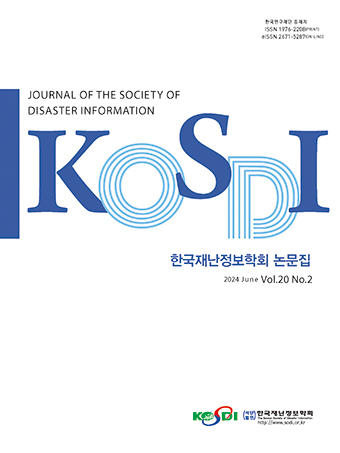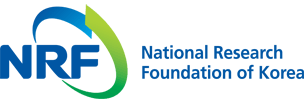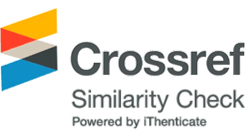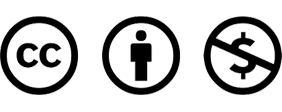Original Article
Abstract
References
Information
Purpose: The current “Water Rescue Activity Risk Assessment Criteria” lacks experimental and theoretical foundations and is difficult to intuitively understand as it is presented in a table classified into four levels based on the intensity of water flow. Therefore, this study aims to redefine the existing criteria. Method: Experiments were conducted in a facility simulating an actual river, with participation from 119 rescue team members. The experimental stages were differentiated by water flow velocity and discharge. During each stage, the risk of level of rescuers during water rescue operations was assessment using quantitative data, such as task completion time, hydraulic pressure, and heart rate, as well as qualititative data collected through sutveys. Result: Based on the analysis data obtained from the hydraulic experiments, a risk curve was developed. This curve complements the existing risk assessment criteria, which only considered water flow velocity and increased risk proportional to a 5cm rise in water depth. The new curve allows for a simultaneous assessment of risk levels based on both water flow velocity and discharge. Conclusion: The application of the risk assessment curve derived from this study confirms that the aquatic environment conditions, such as a water depth of 50cm and a flow velocity of 2m/s or higher - previously classified as a danger level in existing water rescue activity risk assessment standards - remain within the safe range based on actual experimental results.
연구목적: 현재 ‘수상구조활동 위험평가 기준’은 실험적·이론적 근거가 부족하며 유속의 세기에 비례하여 4단계로 분류한 표로는 직관적으로 이해하기 어려우므로 기존 기준표를 재정립하고자 하였다. 연구방법: 실제 하천을 모사한 실험시설에서 119구조대원이 직접 참여하였으며 유속과 유량에 따라 실험 단계를 구분하였다. 단계별 실험 수행 시 작업 수행시간, 구조대원이 받는 압력(수압), 심박수 변화량 등 정량적 데이터와 설문조사를 통한 정성적 데이터를 통해 수상구조 시 구조대원의 위험도를 평가하였다. 연구결과: 수리실험을 통해 얻은 분석데이터를 기반으로 위험도 곡선을 작성하였다. 이는 기존 유속만을 고려하고 수심 5cm 상승에 비례하여 위험도가 올라가는 기존 위험평가 기준표를 보완하여 유속과 유량에 따른 위험단계를 한 번에 알 수 있도록 하였다. 결론: 본 연구를 통해 도출한 위험평가 곡선을 적용하면, 기존 수상구조활동 위험평가 기준에서 위험단계로 제시한 수심 50cm, 유속 2m/s 이상의 수상 환경은 실제 실험을 통해 안전 단계에 머물고 있음을 확인할 수 있다.
- Han, Y.-S., Rhee, D.S., Kim, H.-J., Song, C.G. (2019). "Inundation risk evaluation of underground spaces considering evacuation difficulty and hydrodynamic flow characteristics." Journal of the Korean Society of Hazard Mitigation, Vol. 19, No. 1, pp. 323-329.10.9798/KOSHAM.2019.19.1.323
- Kim, S.E., Park, J.Y., Kim, Y.K. (2021). "A study on the reduction of falling deaths using 4M." Journal of the Society of Disaster Information, Vol. 17, No. 1, pp. 143-153.
- Korea National Fire Agency (2021). Guidelines for Field Activities in Water Rescue Operations. Sejong.
- Korea National Fire Agency (2022). Field Firefighting Safety Management Manual. Sejong.
- Korea National Fire Agency (2023). Standard Operating Procedures for Disaster Sites. Sejong.
- Korean Agency for Technology and Standards (2015). The 7th Korean Anthropometric Survey Project. Eumseong.
- Luan Marcos da, S.V. (2019). "Analysis of physical mechanisms of human body instability for the definition of hazard zones present in emergency action plans of dams. Case study: Santa Helena Dam, Bahia." Associação Brasileira de Recursos Hídricos, Vol. 24, e43.10.1590/2318-0331.241920180185
- Park, C.-S. (2021). "A study on the causes and improvement plans for firefighters' casualty accidents during rescue activities related to the water - 4M analysis -." Journal of the Society of Disaster Information, Vol. 17, No. 4, pp. 710-721.
- Publisher :The Korean Society of Disaster Information
- Publisher(Ko) :한국재난정보학회
- Journal Title :Journal of the Society of Disaster Information
- Journal Title(Ko) :한국재난정보학회논문집
- Volume : 20
- No :4
- Pages :774-785
- DOI :https://doi.org/10.15683/kosdi.2024.12.31.774




 Journal of the Society of Disaster Information
Journal of the Society of Disaster Information







